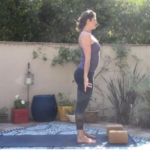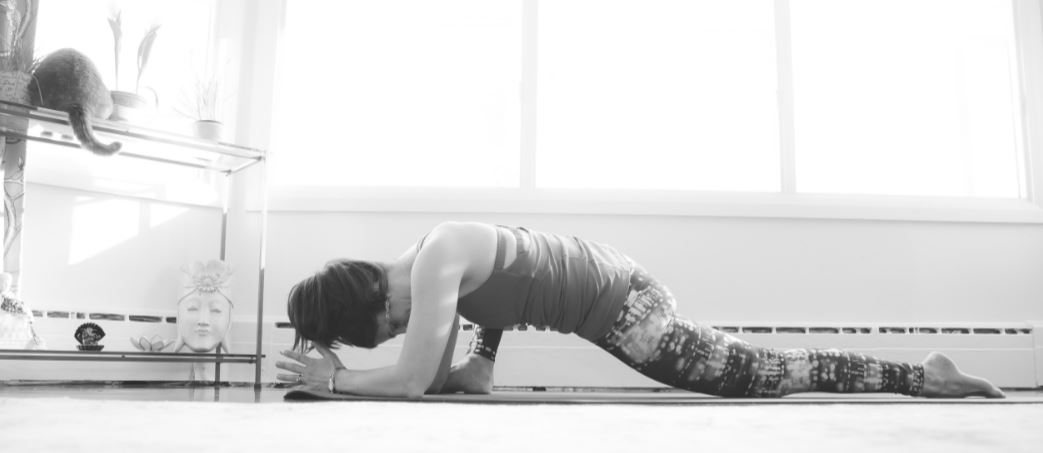Honesty in Yoga: New Movement to Challenge an Established Asana Practice
Yoga ALONE doesn’t make my body feel great.
As a yoga teacher with an “advanced practice” (meaning I can do a lot of fancy poses), I’ve been practicing with a fair amount of effort for several years, over a decade. And like many yoga teachers, I’m a former gymnast and dancer and many yoga postures come rather easily to me in my body.
I have still had to put a lot of effort into my practice, and I do enjoy this work and think it’s worthwhile (see my post on 10 Tips for Arm Balances and What They Have to Teach Us for some of those reasons).
But..I have this hip-clicking thing.
It started a few years ago, probably at least 3 years, because I remember noticing it (or rather, HEARING it, because I don’t really feel anything when it happens) when I was still teaching at Nova Yoga in St. John’s (we were there until we moved in 2015).
I would be happily folding inward in Uttanasana (Standing Forward Fold) and on my way up to stand in Tadasana, CLICK. My left hip would make this little pop.

“Wierd,” I thought. And then I ignored it and moved on with my practice.
It started happening more and more. It was not just in the transition from folding forward to standing, but in other daily movements too. Getting out a chair, moving off the floor from kneeling to another position, taking a step to the side. And both sides, not just one, started clicking away. Not constantly, but enough to notice it.
I thought it was just me. But it turns out, a rising number of yoga teachers have had this “hip-clicking” issue, and some have even had full hip replacements.
Sometimes, there is another reason for going further in the poses than we should, and that is our competitive nature. When we see other yoga practitioners achieving these deep, deep postures, it’s hard to not want to go there ourselves. Our ego kicks in, and we may ignore signals from our body and push through things we shouldn’t.
Let’s just stop for an important moment here. Because I don’t want anyone to be scared of yoga and of their own body.
You CAN trust your body. It has an innate intelligence all its own. It has strength to support you.
It’s important that I say this because many of us have this inkling that there is something “wrong” with our bodies. We’ve been fed this line through marketing, and social media, and through the perception that things we did (sit a certain way, got injured at some point, wore the wrong shoes, did yoga the wrong way, etc.) have led us to the place where we need to be FIXED. And one big thing we can do to shift this perception is to understand fully that our bodies are built to HEAL and to support us as we move.
I started believing this — that my body CAN support me — and things started to shift.
At the same time, I have also realized that I need to move my body and load it in a variety of ways and not just in ways to make it more “stretchy” to make sure it stays resilient and STRONG.
I’m so very grateful that I’ve had a great education in the Anusara principles of skillful action in the body that have contributed to more strength than perhaps otherwise. I still believe that most of those and other ways of movement will continue to serve me and my students.
And there is more layering to do.
And though we think of yoga as being completely balanced — so many postures, moving in so many directions, we do both sides, we must be covering everything, right — the truth is that the traditional practice of modern postural yoga is missing a LOT of movements that our bodies need to be healthy and strong.
The good news is that it’s not that difficult to shift things and to add the variety of movement that our bodies crave.
In the next several posts, I’ll share what I’m doing now in my practice to explore body in a whole new way, within the framework of yoga and other movement:
- Part 1: Why longevity is more important than sensation
- Part 2: What I’m doing to shift my yoga practice ever so slightly to trust my body’s intelligence again
- Part 3: Specific strengthening practices and things I’m avoiding to address the hip-click – COMING SOON
- Part 4: How yoga continues to feed me in a different way than other movement modalities – COMING SOON
This is a 4-part series, and in each part, I’ll talk about some concrete things I’m doing and the resources I’m using. Perhaps you’ll find something that echoes your own experience in here.
Let’s USE the body we have in all kinds of ways. To connect, to move, and to live!


 Empowering women who are 40+ to install movement habits that are nourishing, strengthening, and approachable for a truly calm and connected life.
Empowering women who are 40+ to install movement habits that are nourishing, strengthening, and approachable for a truly calm and connected life.